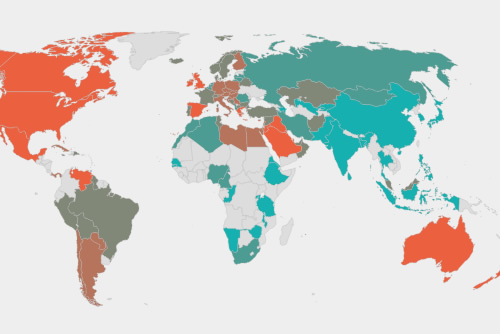
Interesting facts
- Obesity paradox: In people with heart failure, those having a BMI between 30.0 and 34.9 were found to have a lower mortality than those with a normal weight. This has been attributed to the fact that people often lose weight as they become progressively more ill
- Obesity rates in the United States increased from 14.5% to 30.9% in the period between 1971 and 2000
- In 2005 the medical costs attributable to obesity in the US were estimated at $190.2 billion or 20.6% of all medical expenditures
- In 2000 the extra weight of obese passengers cost airlines $US275 million due to higher fuel costs and pressures to increase seating width
- In the US 23-41% of dogs are overweight and about 5.1% are obese
- In the USA close to 20% of children are technically obese
You are more likely to be obese if:
- You live in countries such as USA, Mexico, Australia, Great Britain, New Zealand, Hungary, Canada, Kuwait, Saudi Araia and Chile
- You are from a poorer socio-economic group
- You are less educated
- You are between 55 and 75 years of age
Problems caused by obesity:
- Severely obese people die 8-10 years sooner than those of normal weight
- Every extra 15kg increases the risk of early death by approximately 30%
- Obesity can increase the risk of many cancers including breast, endometrial and colon cancer
- Gout, cataracts and stress incontinence are also associated with obesity
Weight loss surgery
- Approximately 500,000 bariatric operations are performed worldwide each year
- The most commonly performed weight loss operation performed around the world in 2015 was gastric bypass surgery. Sleeve gastrectomy was second most commonly performed.
- The EndoBarrier implantable device for weight loss is utilized in South America, Australia, Europe and other countries. However it cannot be used in the United States.
- The adjustable gastric band (e.g. Lap Band) was in used around the world since the early 1990s but was only approved for use in the US in 2001.
- The sleeve gastrectomy was used as part of an operation called duodenal switch. However many patients were too large for duodenal switch so the first part (the sleeve) was done first to be followed by the second part when some weight had been lost. However for many patients, the second part was not required as weight loss was excellent with the sleeve component.
Website: http://www.worldobesity.org/resources/overweight-obesity-age-category/
Website: https://www.hannover-re.com/905517/recent-medical-news-bariatric-surgery-where-do-we-stand-2015.pdf
Websites: https://www.mexicobariatriccenter.com/obesity-statistics-update-usa-world/